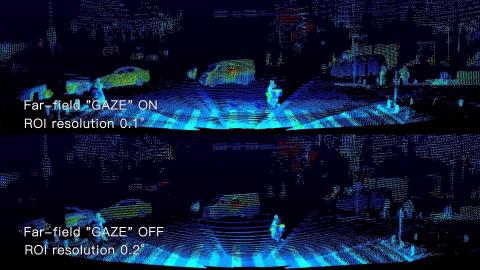RoboSense Unveils The Smart “GAZE” Function Of Its RS-LiDAR-M1 Zoom Functionality Introduced in the LiDAR

Shenzhen, China:
RoboSense (https://robosense.ai/), a smart automotive LiDAR system provider, disclosed today the Hardware Intelligence with the smart “GAZE” function, and the Software Intelligence, referring to the product’s environment perception AI algorithms, as the secret components of their RS-LiDAR-M1. The RS-LiDAR-M1 has also won the CES 2019 Innovation Award for its “GAZE” function.

(Photo: Business Wire)
Jointly, RoboSense and contracted customers have successfully completed the verification of a batch of M1 samples with the smart “GAZE” function. Subsequently, the exciting new smart “GAZE” function was officially launched in June with the new version of the RS-LiDAR-M1.
Autonomous driving systems need to be capable of dealing with various traffic participants in a variety of different road conditions. This requires LiDAR to be able to dynamically adjust its perception focus under constantly changing conditions.
When the autonomous driving vehicle operates the HWP (highway pilot) mode, the “GAZE” function is activated, which in turn increases the vertical angular resolution of the ROI area from 0.2° to 0.1° (or higher). It propels autonomous driving from safety to comfort.
The result includes doubled point cloud density and increased accuracy in measuring the height of small frontal obstacles. This functionality allows the autonomous driving system to accurately calculate passability by taking into account the height of the wheels and the chassis, increasing the recognition distance of obstacles, such as vehicles by 50% and more.
When driving on congested city roads, the TJP (traffic jam pilot) function requires LiDAR to have a smaller blind zone (the minimum blind zone of the M1 is 0.3m) and a higher frame rate, to enable it to swiftly respond to environmental changes. The “GAZE” function is able to instantly increase the frame rate from 10Hz to 20Hz (or higher). This allows the TJP (traffic jam pilot) to complete its calculations in time, helping to prevent annoying cut-ins and accidental scratches.
Disclaimer: This content is distributed by Business Wire India.




